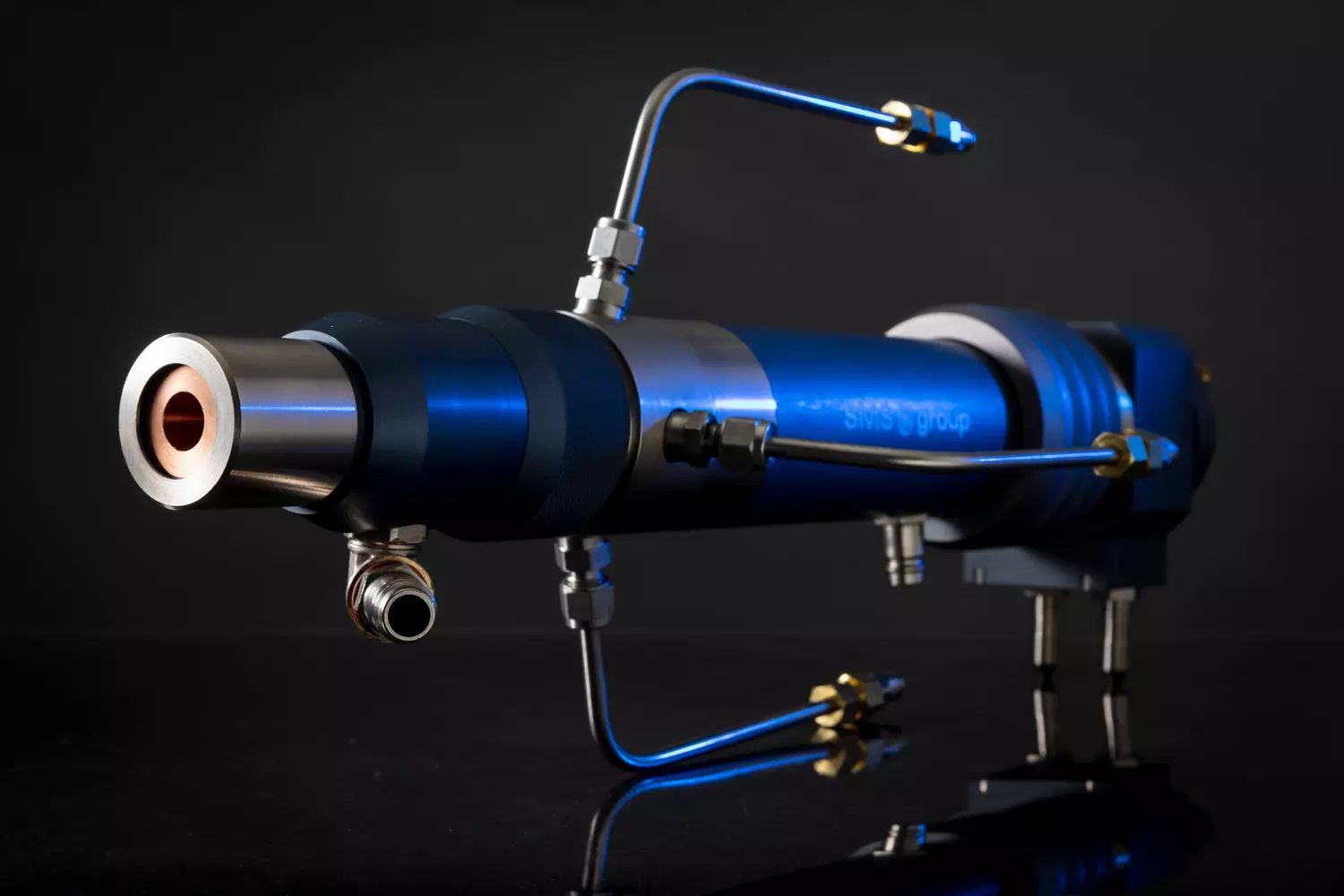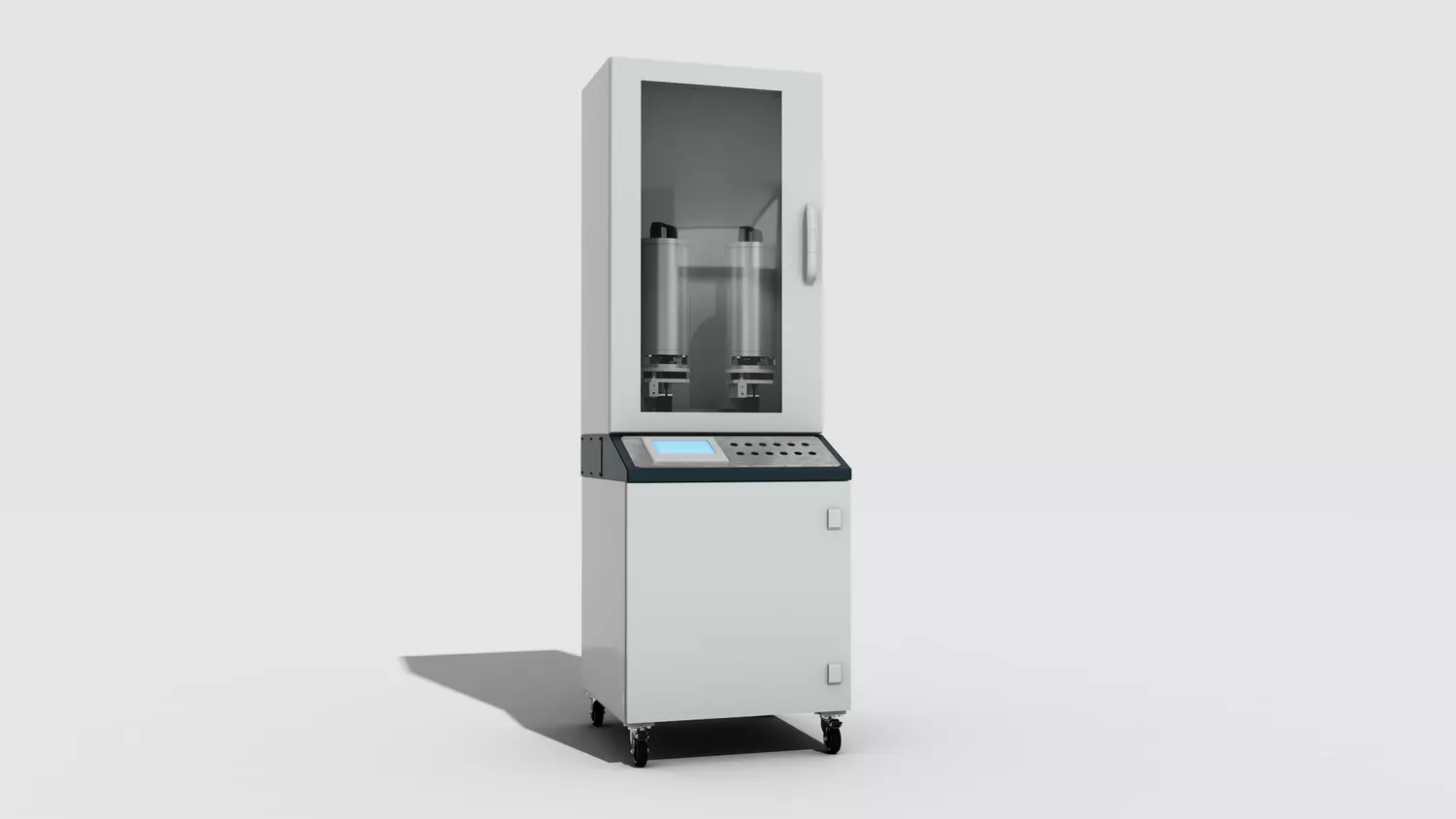Using wire arc, plasma, and HVOF spraying
At first glance, thermal coating processes create a protective shield that makes a component resistant to thermal, chemical, or mechanical attacks such as wear or corrosion at critical points. What distinguishes thermal spraying from other processes is that the sprayed layer does not simply lie on the surface structure of the component – rather, it clings to it.
-
Thermal spraying technologies
With thermal spraying, protective coatings are applied to surfaces in order to protect them against external influences such as corrosion or wear. In this way, components can meet several requirements at once – for example, they can withstand not only corrosion attacks but also abrasive stresses. Some components are also able to extend their field of application thanks to the coating. That is why thermal spraying has become a key technology in many industries.
![]()
Diagram with thermal spraying technologies in comparison (particle temperature / particle velocity) by SMS group -
Wire arc spraying
For corrosion protection, durability, and wear resistance
The right corrosion protection is the alpha and omega when it comes to the durability and wear resistance of the material used. With wire arc spraying solutions from SMS group, you benefit from a process characterized by high application rates and low energy consumption.
Wire arc spraying represents a well-established thermal spray technology. In the process, two metallic wires (feedstock material) are fed into a focus point, where an electric arc melts the wire tips. Droplets are formed and are accelerated into the direction of the substrate by secondary atomization with a high-kinetic gas jet. The atomized particles form a fine-structured homogenous coating on the substrate, with excellent mechanical properties.
-
Plasma spraying
Efficient coating of surfaces
Plasma spraying is a thermal coating process based on a superheated gas – known as a plasma. The gases argon, nitrogen, hydrogen, or helium flow between a tungsten cathode and water-cooled copper anode. Between the two electrodes an electric arc is initiated by a high-frequency discharge and then sustained with DC power. The arc ionizes the gas, creating a high-pressure gas plasma. This results in an increase in gas temperature, which can exceed 30,000 °C and expands the volume of the gas, and increases its pressure and velocity as it exits the nozzle.
Usually, powder is introduced into the gas stream – either just outside the torch or in the diverging exit region of the nozzle. The powder velocities usually achieved in plasma spray deposition range from about 300–460 m/s. Temperatures are usually at or slightly above the melting point. Generally, higher particle velocities and temperatures above the melting point, but without excessive superheating, yield coatings with the highest densities and bond strengths.
Plasma spraying done in an inert atmosphere and/or low-pressure chamber has become a widely accepted practice, particularly in the aircraft engine industry.
Plasma spray systems have proven to be an effective means for applying complex, hot corrosion-resistant coatings of the types Ni-Co-Cr-Al-Y to high-temperature aircraft engine components without oxidation of the highly reactive constituents. In fact, plasma spraying can be used to produce coatings of virtually any metallic, cermet, or ceramic material.
-
HVOF spraying
High-Velocity Oxyfuel (HVOF)
The high-velocity oxyfuel (HVOF) process distinguishes between gas and liquid fuel applications. In the first case, fuel (propane, propylene, or hydrogen) is mixed with oxygen and burned in a chamber. The second uses liquid kerosene as a fuel and air as an oxidizer. In addition, combined gas and liquid fuel applications are available.
In both cases, the products of combustion expand through a nozzle, where the gas velocities can become supersonic. Powder is introduced into the nozzle and is heated and accelerated, achieving velocities between 350 and 700 m/s.
HVOF processes can produce coatings of virtually any metallic or cement material and, for some HVOF processes, most ceramics. Those few HVOF systems burning acetylene as a fuel are necessary to apply the highest-melting-point ceramics such as zirconia or some carbides.
HVOF coatings have primarily been used for wear resistance to date, but their field of application is expanding.
-
Wire arc spraying equipment
We bring together two promising technologies: wire arc spraying and an all-digital current/voltage source developed in-house, resulting in the thermal arc spray system PERFECT spray®− consisting of three main components:
- Arc power source – PERFECT spray®
- Arc spraying gun – PERFECT jet®
- Wire feeding unit – PERFECT drive
Moreover, our portfolio also covers entire plants and tailor-made transportation systems as complete and automated solutions for your individual project.
-
PERFECT spray®
The all-digital arc spraying source
PERFECT spray®
The all-digital arc spraying source
With the wire arc spraying system for thermal spraying according to DIN EN ISO 14917, SMS group opens up entirely new markets in the areas of corrosion and wear protection as well as for maintenance. Through new approaches in electric arc control as well as an open linear design, significant improvements in process efficiency and layer quality can be achieved.
PERFECT spray® uses a digital power source instead of thyristor current sources. The result is an arc that reacts fast and can be precisely controlled at any time. The system is also characterized by less overspray due to low voltages at both the lowest and highest currents. All in all, using PERFECT spray® customers achieve 25 percent higher efficiency due to reduced wire, air, and energy consumption as well as reduced emissions.
Moreover, the power source ensures safety in progress in terms of Industry 4.0 as each value can be read out, documented, and controlled – in a material-specific way.
Arc spraying source models:
- PERFECT spray® 401 (L) – the all-rounder among the arc spraying sources up to 400 Amps
- PERFECT spray® 401 (K) – the all-rounder among the arc spraying source with included cooling device
- PERFECT spray® 600 – arc spraying power source up to 600 Amps
- PERFECT spray® 1000 – the arc spraying source up to 1000 Amps
- PERFECT spray® 2000 – the arc spraying source for highest deposition rates with thick wires diameter up to 4.8 mm and high power up to 2000 Amps
![]()
-
PERFECT jet®
Spraying gun
PERFECT jet® coating gun comes with an innovative jet nozzle concept to generate straightened atomized air for higher efficiency.
Particle speeds of up to 250 m/sec can be achieved.
Its low wear and consistent electrical contact of wires provides for a smooth spraying process. The gun offers superior dependability with a low-maintenance concept with highly functional and durable materials used for all components.
All spraying guns are equipped with an quick exchange system to enable a constant coating and reduce the stop times.
The PERFECT jet 1000 and 2000 are equipped with a secondary air nozzle. Using these nozzles the spray cone of the primary spraying process is manipulated. The cone is widen and the spray distribution is more homogen compared to a spray cone without secondary air nozzle.
Arc spraying gun models:
- PERFECT jet 401 – the perfect partner for the arc spraying source PERFECT spray® 401
- PEFECT jet 600
- PERFECT jet 1000
- PERFECT jet 2000 – the perfect partner for the arc spraying source PERFECT spray® 2001
![]()
PERFECT jet 401 -
PERFECT drive spray
Wire feeding unit
Our wire feed unit is available in two different versions: PERFECT drive spray and PERFECT drive spray compact. Both wire feed units offer the flexibility to use wires from all available spool types due to its multipurpose wire dispenser. Each wire is equipped with a 4-wheel drive with a center clamping device for evenly spread adjustable contact pressure.
Wire feed unit:
PERFECT drive spray – the wire feed unit that assures perfect spraying quality through a continuous wire feed
PERFECT drive spray compact – the wire feed unit used if space is limited
![]()
Wire feed unit PERFECT drive spray by SMS group
Use our contact form for questions, inquiries or personal contact.
-
Plasma spraying equipment
SMS group combines power source technology developed in-house with state-of-the-art process and gas control to operate single- and multi-cathode plasma torches.
The portfolio covers process equipment for plasma systems including the power source PERFECT plasma®, gas control, powder conveyors, and others for single-cathode or three-cathode torches – e.g. F4, Plazjet, Axial 3.
-
PERFECT plasma®
Power source technology for maximum flexibility
Plasma power source (current in A /voltage in V)
PERFECT plasma® 400/80
PERFECT plasma® 600/80
PERFECT plasma® 800/80
PERFECT plasma® 1,000/80
PERFECT plasma® 500/200
PERFECT plasma® 600/200
PERFECT plasma® 1,200/120
PERFECT plasma® 2,000/80
PERFECT plasma® 3,000/80
PERFECT plasma® 750/200
PERFECT plasma® 500/370
-
HVOF spraying equipment
SMS group offers the complete process equipment for HVOF (High-Velocity-Oxygen-Fuel) and HVAF (High-Velocity Air-Fuel) coating processes.
-
PERFECT hvof®
HVOF / HVAF coating process
PERFECT hvof® describes the complete process equipment necessary for a HVOF/HVAF thermal spraying process. The equipment consists of cabinets combining the process control, the gas control (mass flow controlled), the kerosene control, and the cooling water control as well as a safety system.
PERFECT hvof® is designed to operate HVOF (High-Velocity-Oxygen-Fuel) and HVAF (High-Velocity Air-Fuel) spraying guns. In contrast to classical HVAF systems using compressed air, nitrogen is used to generate artificial compressed air. Different spray guns have different requirements for the plant technology.
The equipment supports the following spray gun types:
- liquid fuel spraying guns (e.g. JP)
- gas fuel spraying guns (e.g. DJ)
- combined gas & liquid spraying guns (e.g. CJS)
-
Outside spraying gun
The HVOF/HVAF spraying gun PERFECT jet 1 is designed to provide outside coatings.
The spraying gun is combining gas and liquid fuel to achieve a stable flame with low heat input with normally lower operational expenditure compared to a pure gas fuel spraying guns.
With this technology flash coatings but also improved thick layer coatings can be produced economically.
![]()
PERFECT jet -
Inside spraying gun ID1
The HVOF/HVAF inside spraying gun PERFECT jet ID1 is designed to provide inside coatings.
The spraying gun is combining gas and liquid fuel to achieve a stable flame with low heat input with normally lower operational expenditure compared to a pure gas fuel spraying guns.
It is designed to operates in diameter from 60 mm to 100 mm (rotating work piece) or from 70 to 120 mm (rotation spraying gun)
![]()
PERFECT jet ID1 -
Inside spraying gun ID2
Additive Manufacturing meets HVOF/HVAF spraying
The HVOF/HVAF inside spraying gun PERFECT jet ID2 is the first additive manufactured spraying gun. It is designed to provide inside coatings. It operates in diameter from 60 mm.
Additive Manufacturing offers the following advantages:
- improved sustainability by reduced energy consumption – more energy is kept in the process, less energy is used for cooling
- improved production time – less time needed to change the spraying gun
- increase life time due to improve cooling
- integrated substrate cooling
- increased maintenance safety by a reduced number of interfaces and sealings
- flexible design based on customer needs. The length or the diameter of the combustion chamber can be designed based on customer wishes
![]()
PERFECT jet ID2 -
Powder dosage and feeding unit
The powder dosage and feeding unit (PDFU) by SMS group dosages the powder by means of exchangeable conveyor discs and transports it into a carrier gas. This carrier gas transfers the powder to the spray gun.
The PDFU disc is able to dosage and feed metallic powder and cermets in a size range from 1 to 150 µm.
We offer a twin systems. It consists of two powder hoppers with optional powder capacity up to 10 liters and different disc sizes.
![]()
Twin PDFU disc
Downloads
- Brochure – Weld seam zinc coating
- Brossura – Zincatura dei cordoni di saldatura
- Broschüre – Nahtverzinkung
- Broschüre - Perfect Jet, Service und Wartung
- Brochure - Perfect jet 401 M-S
- Application report centrifugally-cast pipes
- Applikationsbericht Schleudergussrohre
- Applikationsbericht Zinkbeschichtung für OSB boards
- Application report zinc coating for OSB boards










